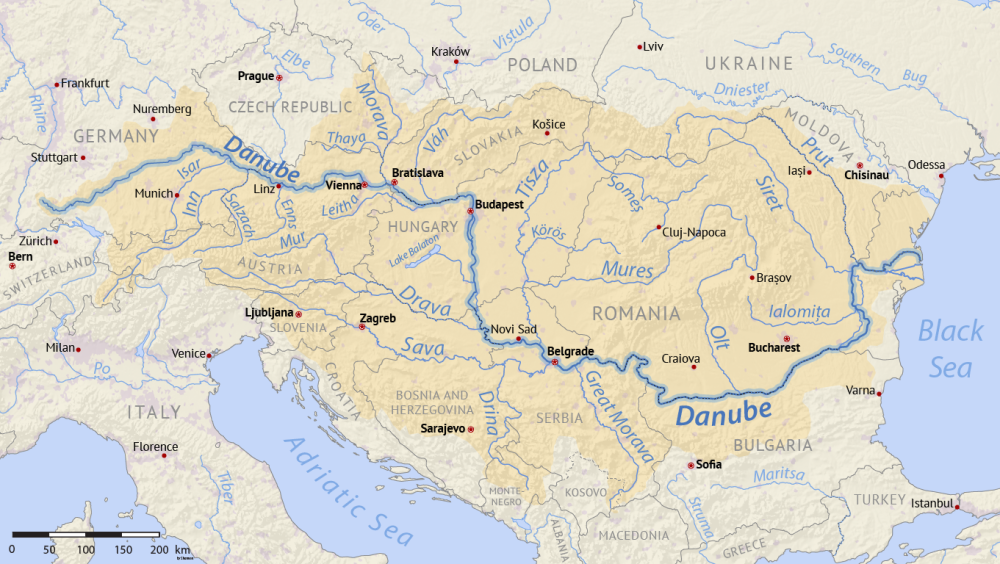The course of history might have played out very differently were it not for the Danube River – the most international river in the world. Originating in Germany, it flows through Austria, Slovakia, Hungary, Croatia, Serbia, Romania, Bulgaria, Moldova, and Ukraine before reaching the Black Sea in Romania. This natural waterway has created a trans-European corridor that’s been pivotal in shaping the region’s cultural, political, and economic evolution.
Today, the Danube supports energy generation, trade, and agriculture, provides drinking water for millions, and sustains an extraordinary range of biodiversity, including ancient fish species that have fed Europeans for millennia. So, were you to tube the Danube, what might you encounter? And where would it take you?
Danube River: on the map
The Danube River begins in Germany at the confluence of two streams, the Brigach and Breg, just east of the city of Donaueschingen. They meet within the Black Forest of Baden-Württemberg, where on land, deer, boar, and badgers dart between the trees.
At the Upper Danube Nature Park, the Danube Sinkhole appears where part of the river disappears into limestone caves. Usually, there is still water running on the surface, but occasionally it “disappears” completely, only to reappear in Aachtopf.
The river then runs on into Austria, where Vienna’s elegant palaces sit along the “blue Danube”, and into Slovakia and Hungary. After the Hungarian Plain, it swells thanks to tributaries like the Drava, Sava, and Tisza before winding on from Croatia to Serbia, Romania, Bulgaria, and Moldova. As it comes to an end, the world’s most international river tops another record as Europe’s largest delta – the Danube Delta that sits partially in Ukraine and Romania. In total, it traces a 2,857 kilometer (1,775 mile) path from Germany to its outflow into the Black Sea.

That’s a long way for you and your rubber ring.
Danube River life
Today, somewhere in the region of 83 million people live in the Danube River Basin, and its water is critical for around 20 million of those.
Throughout history, the Danube River has served a critical economic role throughout history, facilitating freight transport, generating hydroelectricity, providing water for residential and industrial use, and creating a commercially viable network of trade throughout Europe. According to WWF, The European Commission said that the Danube is the “single most important non-oceanic body of water in Europe” and a “future central axis for the European Union”.
As well as supporting a thriving economy for Homo sapiens, the Danube River also provides vital natural habitats for a vast array of plants and animals. Important ecosystems along its route include the Black Forest, the Alps and Carpathian Mountains, the Hungarian plains, Bulgarian islands, and reed beds and marshes in the Danube Delta.
Rare and important species include five kinds of sturgeon, the white pelican, white tailed eagle, and black stork. Its significance earned it a spot in WWF’S Global 200 list of the world’s most valuable ecological regions due to its “exceptional levels of biodiversity, such as high species richness or endemism, or those with unusual ecological or evolutionary phenomena”.
And if fancy rivers are your thing, did you know the biggest on Earth might actually be in the sky?
Source Link: You Could Float Through 10 Countries Before The World’s Most International River Spat You Out